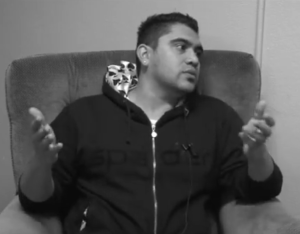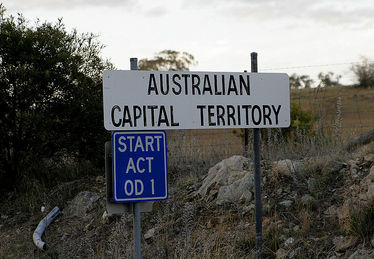Filming (mis)adventures
Before The Invisible Thread series I had never interviewed anyone on camera. I’ve had the pleasure of interviewing hundreds of interesting people for print but my voice, my words have only ever appeared on the page, and my image has remained hidden. Seeing yourself played back is an excruciating experience (how do actors cope with their overblown reflection at movie premiers?) and it revealed an irritating quirk.
Whenever I start talking I experience an uncontrollable urge to wave my hands about. After I saw the first few interviews played back I gave myself a good talking to. Note to self: Keep your hands down. At all times. My hands would not listen. In subsequent interviews the second I started speaking up they would jump. Waving, waving, always waving. During one interview I tried to unobtrusively sit on my hands but I quickly released them. When I wasn’t waving them around I was unable to think. However it seems many authors are similarly inclined, so I’m in good company. Here’s Omar Musa and me waving at each other.
Read More »Filming (mis)adventures
My hand-waving was not the only challenge we faced. There were also a few technical misadventures. The ACT Writers Centre — where we filmed the majority of these interviews — was a logistical nightmare. Never has any room had so many plug sockets and light switches and poles, all highly unappealing features onscreen. We did our best to avoid them but early on one caught out my indefatigable cameraman, Dylan. During set-up my head was covering it, but as I began speaking and waving and moving around, the nasty little offender began playing hide and seek. When viewing the footage it was distracting in the extreme. I did show it to a couple of ‘test cases’ who didn’t notice it until well into the interview, but I knew we had to reshoot my noddies*. A right pain, but you can be sure we didn’t make that mistake again.
Then there was the issue of the second mic. We had a reliable and professional lapel mic for the author but tried a series of different mics for me. So in a couple of interviews you’ll see me holding up a lovely gold number (disco queens eat your heart out). There was no issue with the sound quality but when the interviewer holds a mic it changes the dynamic, making it difficult to set the interview on an equal footing. So we swapped that for another lapel mic which, as it turned out, would have been perfect if we were working as spies but wasn’t so great for interviewing authors. It picked up everything in the room, and I do mean everything. On the playback I swear you could even hear the air moving. So finally we returned to disco gold but with me holding it between my thighs out of shot (as you can see here while filming Roger McDonald). Rather odd but somewhat less intrusive.
 But perhaps the crowning failure came courtesy of an author who shall remain nameless who deadbolted one of the doors after entering the room. The interview went beautifully, said author exited out of the second door and shortly afterwards, taking a break before the last author arrived, we did too, carefully closing it behind us to ensure that all Dylan’s camera equipment remained safe.
But perhaps the crowning failure came courtesy of an author who shall remain nameless who deadbolted one of the doors after entering the room. The interview went beautifully, said author exited out of the second door and shortly afterwards, taking a break before the last author arrived, we did too, carefully closing it behind us to ensure that all Dylan’s camera equipment remained safe.
When we returned, reflecting on how well the interviews had gone so far that day, we discovered that my key wouldn’t open door 1 (now deadbolted) or door 2 (which opened with a different key). While waiting for the security company, Dylan paced from door 1 to door 2 and back again, vainly trying them both at least 30 times each. ‘Stop, Dylan!’ I cried eventually, and he then attempted to convince me that I would be able to climb up through a high glass window above the door and drop ninja-style into the room. Needless to say I was somewhat reluctant, and thankfully we were unable to prise the window open. There was talk of breaking the door down; we weren’t ruling it out. Eventually the security man arrived and popped it open easily with a master key (I may have fist pumped, I can’t be sure). ‘The whole thing sounds Chaplinesque,’ a friend commented. Indeed.
Now I’ve confessed all our misadventures you might be pleasantly surprised to discover that this week’s interview actually looks pretty decent. A writer and glass artist of Arrente, Chinese and Anglo-Celtic descent, Jennifer Martiniello has plenty of insightful things to say. Make yourself a cuppa, put your feet up, and click that little triangle.
* For those as ignorant as I was, noddies don’t have anything to do with Big Ears or Enid Blyton. A ‘noddy’ is the technical term for when an interviewer’s questions are filmed after the interview has been recorded. We used two cameras for the majority of the series, but for the first few interviews we only had one camera and so after the author left I became adept at pretending they were still sitting in the chair across from me.





